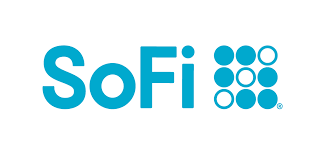The IRS Is Increasing Contribution Limits for Health Savings Accounts and You Should Take Advantage ASAP
KEY POINTS
- HSAs are available exclusively to those with high-deductible health insurance plans.
- They have a triple tax advantage, as they're funded with pre-tax dollars, the money grows tax free, and you can make tax-free withdrawals for qualifying medical expenses.
- In 2024, you'll be able to contribute about 8% more to your HSA with an individual plan, and about 7% more with a family plan.
If you have a high-deductible health insurance plan, you may have heard of health savings accounts (HSAs). With a high-deductible plan (defined as one with a deductible of at least $1,600 for an individual or $3,200 for a family in 2024), you qualify to open one. An HSA is a special type of savings account that is designed to hold money put aside for qualifying medical expenses.
And unlike their similarly named brethren, flexible spending accounts (FSAs), HSAs actually are flexible. You get to decide how much to put in (up to the annual limit, which I'll discuss below) and can roll your contributions over every year. And just in case you're not completely sold on HSAs yet, wait, there's more!
HSAs are triple tax advantaged, as the cash you fund them with reduces your taxable income for that year. Then the money grows tax free, and you won't even pay taxes on it when you make withdrawals to cover qualified medical expenses. HSAs can even form another piece of your retirement puzzle because, depending on where you open the account, you might be able to invest the money.
If you've already got an HSA or will be transitioning to a high-deductible health insurance plan for 2024 and therefore opening one with a bank, there's some good news. Contribution limits will be increasing. Here's what you need to know.
2024 HSA contribution limits
A lot of Americans have struggled with inflation over the last year and change, but HSA limits are changing next year to keep up. For 2024, those with an individual health insurance plan and an HSA can contribute up to $4,150 to their account -- an increase of about 8% from the $3,850 limit in 2023. If you've got a family plan, you can contribute $8,300, up about 7% from 2023's limit of $7,750.
If you're over 55, you can make catch-up contributions of $1,000 more. This means if you and your spouse (also over 55) have a plan together, your total contributions can be $10,300. It's worth taking advantage of these increases, thanks to the tax and flexibility benefits I discussed above.
Make a plan now
How can you take advantage of this change? We're only halfway through 2023, and you can't make higher contributions to your HSA until 2024, but now is a great time to come up with a plan. If you can afford to contribute up to the limit for your account type, it's definitely a good idea, because you'll be able to let the money grow if you don't use it for medical expenses. You'll need to get in touch with your company's human resources department to up the contributions from each of your paychecks in 2024. And if you're not investing your HSA funds currently, check with the financial institution that holds your account to see if you're allowed to, and what types of investments you'll have access to.
An HSA can be a great way to optimize your healthcare spending, and being able to contribute more money to one next year can help you lower your taxable income and potentially help fund your retirement. What's not to like?
Our Research Expert
We're firm believers in the Golden Rule, which is why editorial opinions are ours alone and have not been previously reviewed, approved, or endorsed by included advertisers. Motley Fool Money does not cover all offers on the market. Motley Fool Money is 100% owned and operated by The Motley Fool. Our knowledgeable team of personal finance editors and analysts are employed by The Motley Fool and held to the same set of publishing standards and editorial integrity while maintaining professional separation from the analysts and editors on other Motley Fool brands. Terms may apply to offers listed on this page. APYs are subject to change at any time without notice.



